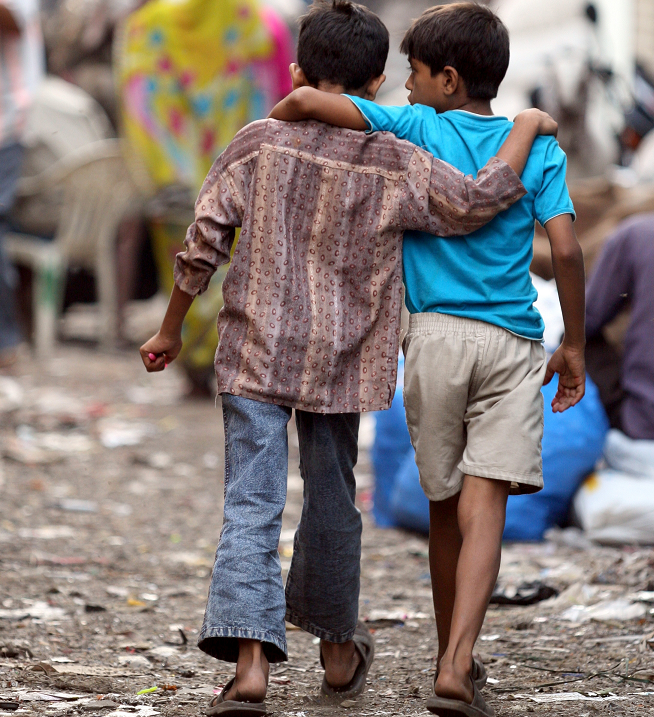India panicked. The world broke into a sweat. A man had died in Mumbai, India’s commercial capital, to the ever-so growing shadow of killer Corona Virus pandemic last week.
No, he isn’t the only victim India has had in the past few weeks. Nor was he a celebrity or a billionaire. Indeed, he was just a garment seller. But he happened to live in one of Asia’s biggest slums, Dharavi, which houses one million people in a little over two square kilometer land. Lives are packed like stacked hay. And we know hay fires break out without even a spark—just being baled and moist is enough.
In no time a team of doctors and volunteers swooped on to the area. Cops were in tow. They fanned out and stayed till midnight. Family was isolated. Some 2,500 neighbours were stamped for quarantine. The deceased’s movement of last two weeks was retraced with the help of his people. A list of his acquaintances was mapped and alerted. His shop, and some 100 others, including the nearby 330 flats were put under barriers. Common spaces between the buildings were sprayed. A posse of policemen now guarded the area to enforce no violation.
The world watched. It’s fears found a shape in headlines. Dharavi is not unknown to humanity. Thanks to power of Hollywood, Dharavi was made famous through Oscar-winning “Slumdog Millionaire” in 2009. It topped the worldwide box office. Best-ever grosser for Fox Searchlight Pictures. “Visually dazzling and emotionally resonant” was the consensus on Rotten Tomatoes. The movie celebrated human spirit through the eyes of a child, growing up amidst faeces, open sewers, violence and murder.
The Unknown Dharavi
The world knows little more on Dharavi. Not just the world, even Indians don’t know that half of Mumbai’s waste is recycled in Dharavi. That everyone has a roof over his head, there is no homelessness. Nor any caste, creed or religious divides. Mosques, temples, churches share boundaries. Dharavi just accepts everyone; and supplies the sprawling Mumbai its faceless workers and helpers.This gritty humanity, and its small factories, pottery, plastic, textile, bakery industries etc, generate an annual turnover of $1 billion, 30% of which is paid as taxes. A 600 sq feet apartment costs half a million dollars in Dharavi! It’s in demand.
It’s not to say that Dharavi is not potentially explosive in the light of Corona Virus. It has a long history of epidemics. It was devastated in a 1896 plague which killed half of Mumbai’s population. Other epidemics gripped it for next quarter of a century. Mortality was high. Dysentery, cholera, typhoid, leprosy, polio have made lives fall like flies. IN 1986, a cholera epidemic showed up most of its victims hailing from Dharavi. It has a poor-protection record: Those who survive viruses, are often consumed by fires and floods which are recurrent.
India girds up loins for challenge
Thus anxiety of the Indian officials is understandable. It has counted the elders in the locality and put them under extensive testing. Fortunately, the country is now equipped with antibody blood tests which take only 15-30 minutes. India has an Integrated Disease Surveillance Programme (IDSP) for a decade and half now. It’s data allows health authorities to scan cases from Public Health Care (PHC) level upwards. It can spot clusters of a community outbreak of diseases. It’s following a geographical quarantine strategy. Movements, to and from, is interrupted in such clusters. Testing is ramped up. So is surveillance. Environment, heat and humidity, is factored in.
Indian authorities, for the moment, have identified around a dozen hot-spots. Dharavi is not one of them. Fortunately, cases have increased in Dharavi since. Mumbai, and Maharashtra, continue to be the most worried state in India. Officials are doing whatever best they could. A Containment Officer (CO) is co-ordinating with the police, the municipality and healthcare workers to ensure residents get essential supplies of food, milk, water and medicine round the clock.
Dharavi isn’t used to world’s concerns. Even “Slumdog Millionaire” had just a couple of shoots from within. It’s used to keeping homes and roads clean; water supply and essentials running of 20-million plus lives in the megapolis every day even as their own lanes, alleys and hearths escape the world’s attention. Once in a while, a Hollywood or a Virus brings it back into human consciousness. To be forgotten, as soon as the event is over.


